Control joints required
15 Mar 2018, LBP & Regulation, Prove Your Know How
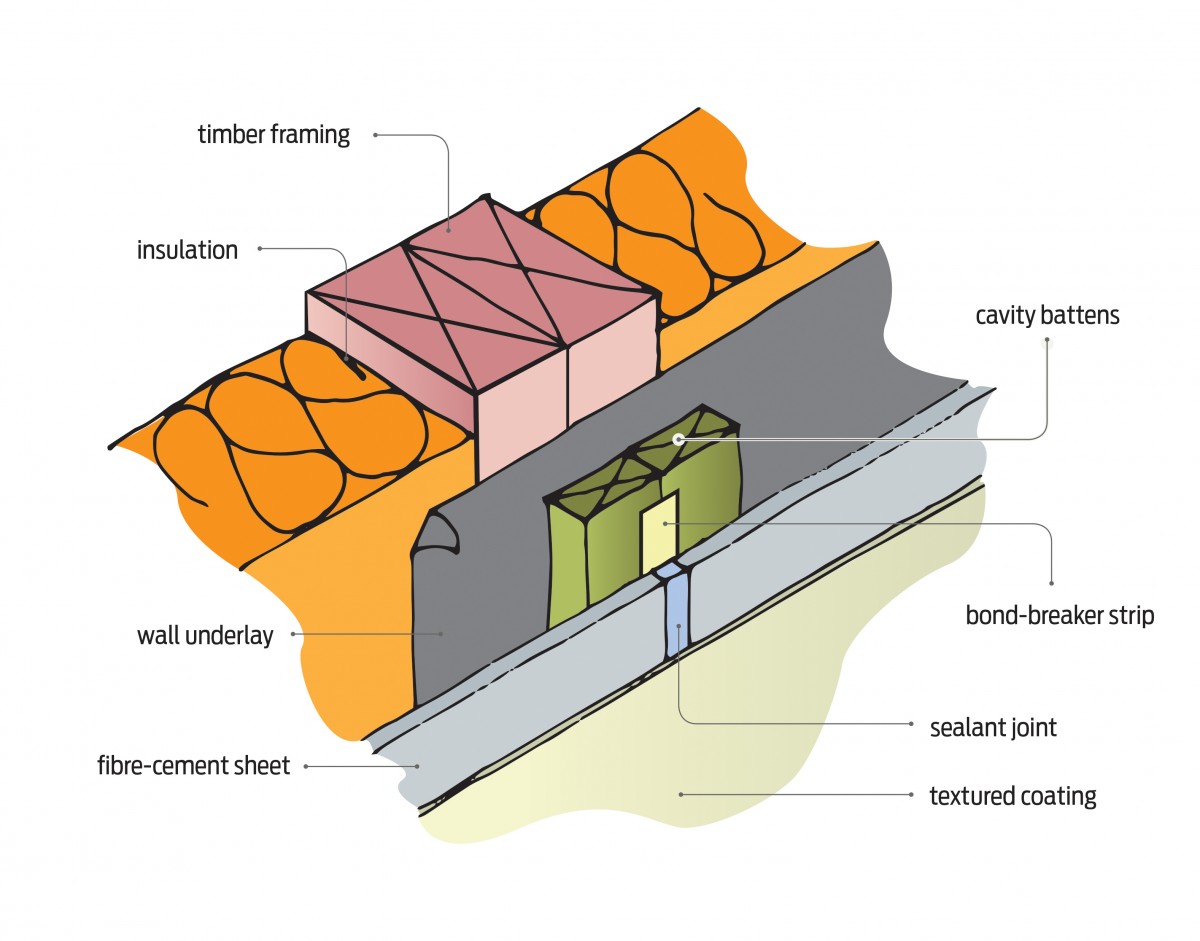
To maintain durability and performance over time, plaster cladding solutions require movement control joints
Working on a plaster-based cladding system is Restricted Building Work (RBW), unless you are doing repairs, replacement or maintenance work under Schedule 1. All RBW requires a building consent and, if you are doing the work, you either need to hold an external plastering licence or be supervised by someone who does.
Reduce risk of cracking
Cracking in external plastered claddings such as stucco and textured finishes is a potential source of water entry into the building structure. The cracking may be caused by movement from changes in temperature, moisture level or curing shrinkage, or from building movement due to wind or earthquakes.
Movement control joints, which allow movement to reduce the risk of cracking occurring, must be incorporated in plaster finishes. They manage cracking by providing predetermined lines of weakness or a flexible sealed joint in the plastered finish.
Locate joints during design
The locations of movement control joints should be determined at the design stage of the building project and should be based on the type of plastered or textured finish to be applied, as well as the overall ‘look’ of the building.
Movement control joint locations must be shown on drawings and should not be left up to the on-site plasterer. There is a range of options for vertical joints. Horizontal joints should be flashed or have a cladding overlap.
Movement control joints in textured finishes
Textured plaster finishes include modified cement and acrylic plaster, and can be applied over a range of substrates. These include fibre-cement sheets, polystyrene, exterior insulation and finish system (EIFS) cladding and polystyrene block systems, clay bricks, concrete masonry and concrete.
Locating the joints in textured finishes
The locations of movement control joints in the plaster finish vary according to the substrate type. The locations should align with any movement control joints in the substrate and occur where the substrate support changes, eg from solid to timber-framed construction. Locations for movement control joints are typically required:
Vertically in accordance with the supplier’s instructions, typically up to 5.4m for fibre-cement and up to 20m for EIFS.
- Aligned with structural control joints.
- At each floor level for horizontal joints.
- Vertically on either side of large window and door openings.
- At junctions between different materials.
Forming joints in textured finishes
Vertical control joints are formed in fibre-cement and polystyrene substrates by filling the gaps between the substrate sheets with sealant. This is either over a bond-breaker tape between fibre-cement sheets (Figure 1 – see main image) or over a polyethylene foam (PEF) backing rod between polystyrene sheets (Figure 2).
Alternatively, a proprietary unplasticised polyvinyl chloride (uPVC) expansion joint may be inserted between polystyrene sheets. The finish coat is then applied over the sealant or the expansion joint.
The sealant must be correctly installed to ensure that a waterproof joint is achieved. The sealant must:
- Stick to both sides of the joint.
- Have a cross section that is thinner in the middle of the joint than at the edges.
- Not adhere to the substrate material.
The joint ratio should be 2:1, eg for a 10mm wide joint, the sealant should be 5mm deep at the centre of the joint.
Vertical control joints are typically between 6-18mm wide depending on the substrate and the manufacturer’s recommendations.
Inter-storey horizontal movement control joints are typically flashed with a metal flashing (Figure 3) and should have a minimum 15mm wide gap.
Movement control joints in stucco
Movement control joint requirements for reinforced stucco over a drained and vented cavity with a rigid or non-rigid backing are set out in NZS 4251.1: 2007 Solid plastering – Cement plasters for walls, ceilings and soffits.
Locating control joints in stucco
NZS 4251.1: 2007 requires control joints to be located:
- For vertical joints:
– on both sides of openings that are 2m wide or more (Figure 4)
– on one side of openings that are less than 2m wide*
- At each floor level (horizontal joints).
- To break up expanses of wall more than 12m2 (4m maximum spacings vertically and horizontally is recommended).
- At changes in a wall cross section such as external and internal corners.
- At any point where natural flexing of the building may occur, such as at the top of a plate level of a gable wall, or where there is a cantilevered deck.
*Note: A vertical control joint is not required when an opening is less than 500mm wide, or the area of the opening is less than 0.2m2. Where the width of an opening is between 500mm and 2m but the opening is more than 0.2m2, diagonal reinforcing is required at the corners opposite the movement control joint.
Forming control joints in stucco
Vertical control joints are formed by plastering up to a corrosion-resistant angle, T-section, proprietary jointing bead or temporary batten (Figure 5). Alternatively, for three-coat systems, a V-groove may be cut through the lower (bond and flanking) plaster coats before they harden.
Fill the gap or groove that is created with a polyurethane, polysulphide or neutral cure silicon-type sealant inserted over a PEF backing rod before the finish plaster coat is applied. Prime the joint edges before applying sealant because sealant will not stick to the plaster.
The joints should be 10-12 mm wide and wire mesh or lath reinforcing must not be carried across the control joints.
Horizontal movement control joints are typically flashed (Figure 6) and should have a minimum 15mm wide gap.
This article first appeared in Codewords – Issue 82
Register to earn LBP Points Sign in
7 Comments
Leave a Reply
You must be logged in to post a comment.


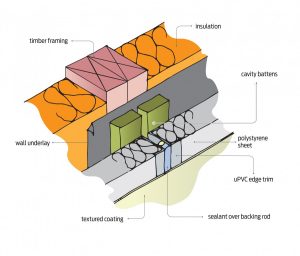
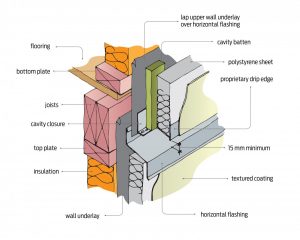
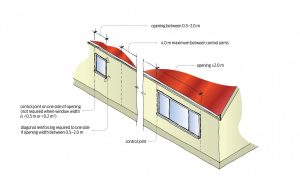
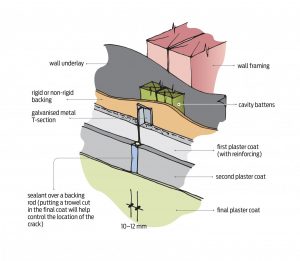
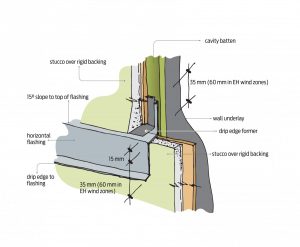


Control joints
question 2 and 3 are the same but different answers
Thanks for the heads up Stephen! That’s fixed now, sorry if it caused you any difficulties.
Good knowledge
Not The Best Result
good to know
had to re read artical